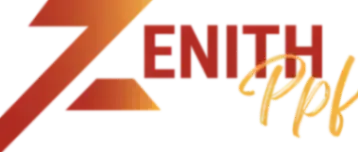The PPF Installation Process
The PPF Installation Process
Preparation and Cleaning
A proper Paint Protection Film (PPF) installation starts with meticulous preparation. Installers wash the vehicle to remove dirt and debris, then use chemical decontaminants and clay bars to eliminate embedded particles. Any wax, tar, or coatings are stripped so the film can bond directly to the clear coat. An inspection follows to identify chips or scratches, with minor imperfections corrected or touched up before the film is applied.
The vehicle is then moved into a controlled environment with minimized dust and humidity. Bright lighting helps installers see edges and align the film perfectly. Wearing gloves and using clean tools prevents oils or dirt from interfering with the adhesive.
Cutting and Fitting
PPF is typically cut with computer-generated patterns tailored to each vehicle’s make, model, and trim. These pre-cut templates reduce installation time and eliminate most cutting directly on the paint. In some cases, skilled installers trim edges or corners by hand, applying a light touch to avoid damaging the paint.
Before application, the installer sprays a slip solution—usually a water and soap mixture—onto both the panel and the adhesive side of the film. This allows repositioning and prevents premature sticking. Large sections, such as hoods and bumpers, are aligned from the center outward, smoothing air and solution toward the edges.
On complex curves and contours, heat is applied to make the film pliable, while controlled stretching ensures a snug fit without overstressing the material.
Adhesion and Finishing
Once positioned, installers use squeegees to press out the slip solution and bond the film to the paint. Overlapping strokes remove bubbles and creases. Edges are trimmed and wrapped around panels or tucked under trim for a seamless look. Adhesive promoters may be applied in areas prone to lifting.
As the film cures over several days, the bond strengthens. During this time, car washes and high-pressure sprays should be avoided. Installers often recommend a follow-up inspection to confirm all edges are secure and the finish is flawless.
Book a PPF installation at Zenith PPF for professional results.
Preparing Your Vehicle
Arriving with a clean car helps installers focus on fine details. Wash your vehicle beforehand to remove road grime. Avoid applying waxes or sealants in the weeks leading up to installation, as they must be stripped prior to bonding. Discuss chips, scratches, or aftermarket modifications with your installer so they can prepare accordingly.
What to Expect During Installation
Depending on the coverage, installation may take several hours to overnight. Installers may remove emblems or trim to wrap edges cleanly. Slip solutions and squeegees are used for alignment and bubble-free application, while heat and tension are applied for complex shapes.
After installation, the adhesive cures over about a week. Small streaks or bubbles may appear but typically dissipate as moisture evaporates. Most shops offer a post-installation checkup to ensure everything has settled properly.
Aftercare and Regular Inspection
Caring for your PPF involves gentle washing and routine inspections:
Wash with mild automotive soap and microfiber mitts.
Avoid automatic washes with brushes.
Dry with microfiber towels to prevent water spots.
Consider a PPF-safe ceramic coating for added hydrophobic protection.
Inspect edges, corners, and high-impact areas regularly. If lifting or damage occurs, most issues can be repaired without replacing the entire panel.
Choosing a PPF Installer
Selecting the right installer is critical. Look for shops certified by film manufacturers, offering warranties on both the material and labor. A professional should explain the process, use pre-cut templates, and show examples of their work.
Research reviews, ask for testimonials, and, when possible, visit the facility to ensure it maintains a clean, controlled environment. Quality installation environments are crucial for dust-free results.
For more in-depth information about how PPF works and why professional installation matters, you can also review this Automotive Protection Film Guide from XPEL (external resource).
Maintenance After Installation
Once installed, PPF requires minimal maintenance. Avoid waxing or sealing the film until the adhesive fully cures. Stick to gentle cleaning products and techniques, and avoid abrasive polishes or clay bars. Should lifting or damage occur, contact your installer promptly. Proper maintenance ensures maximum lifespan and performance.


